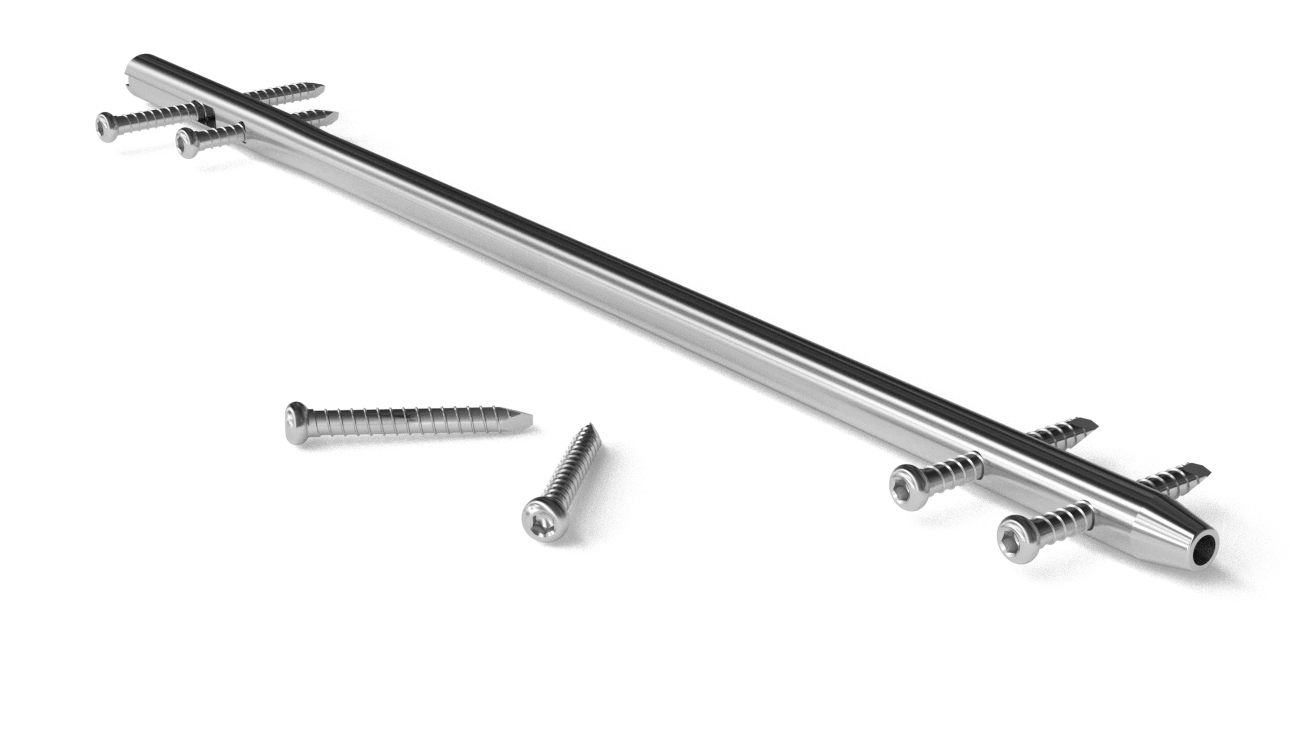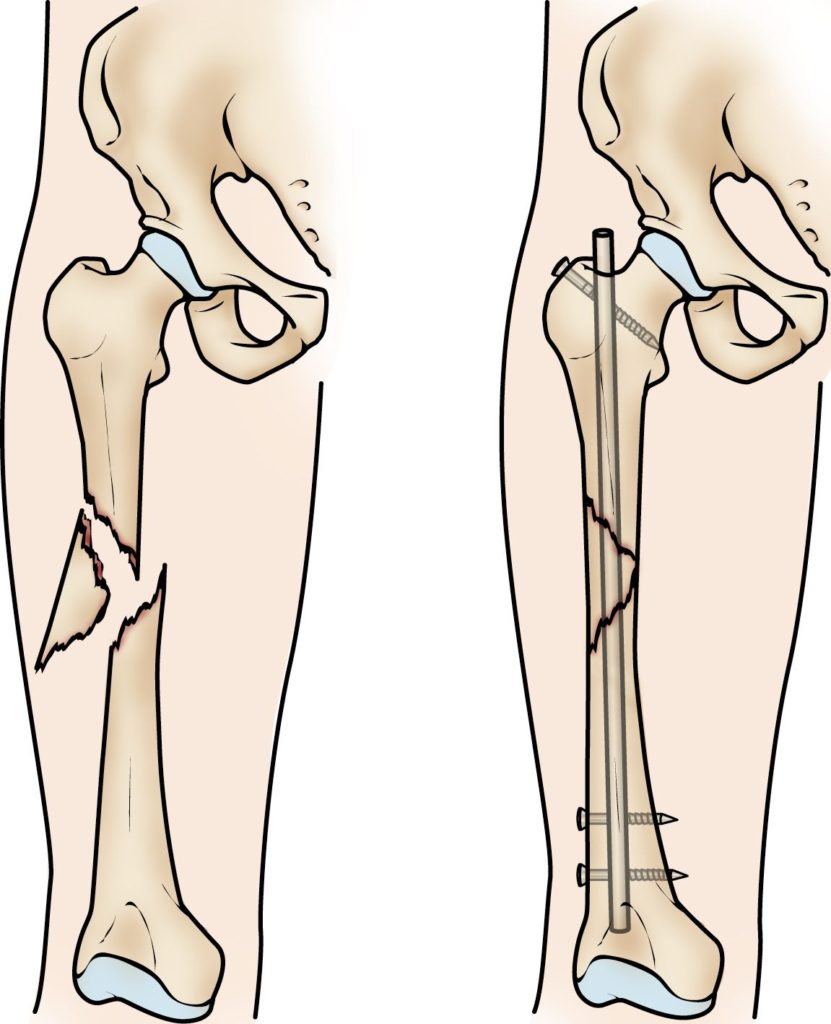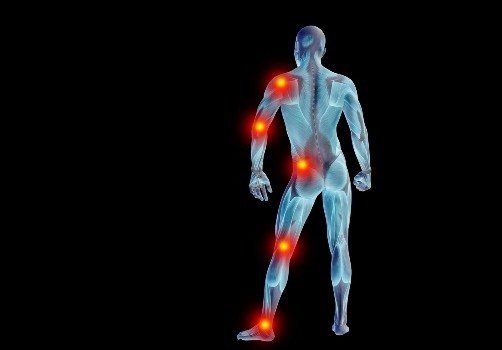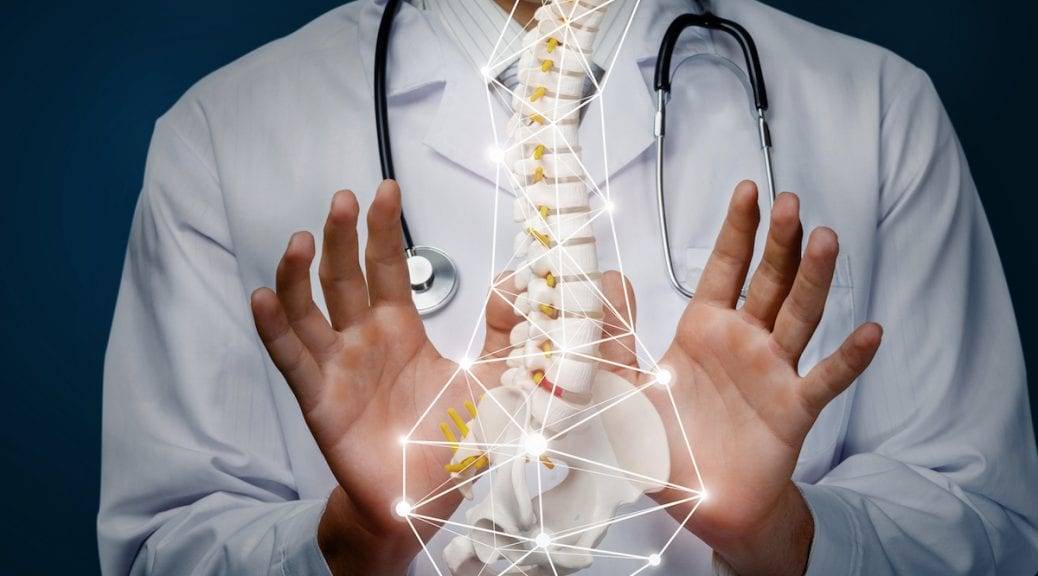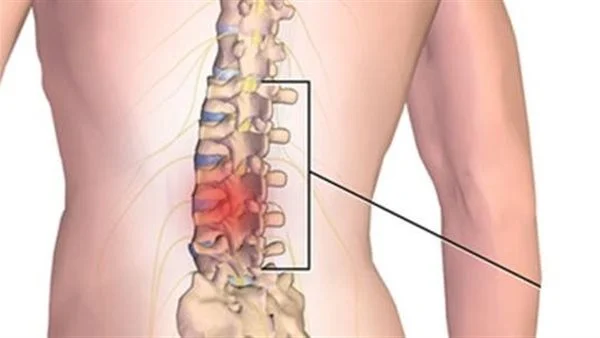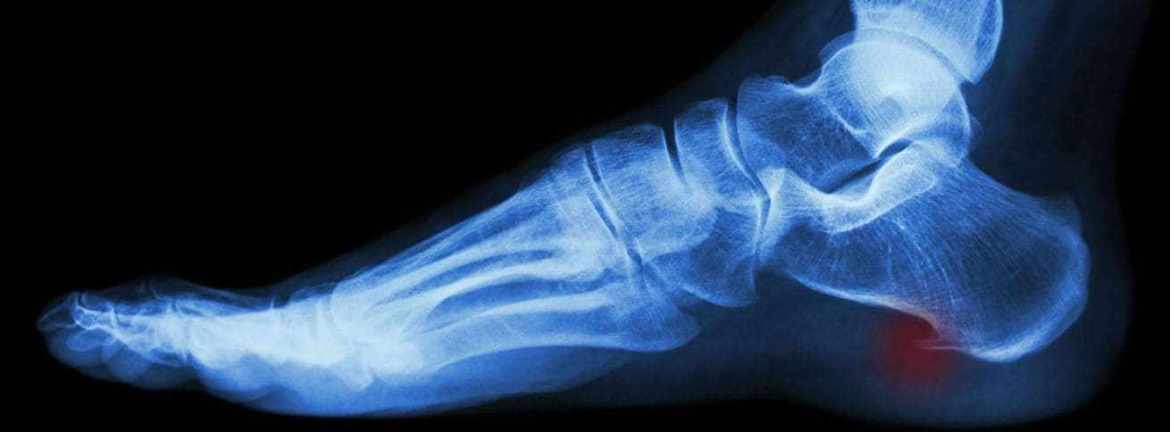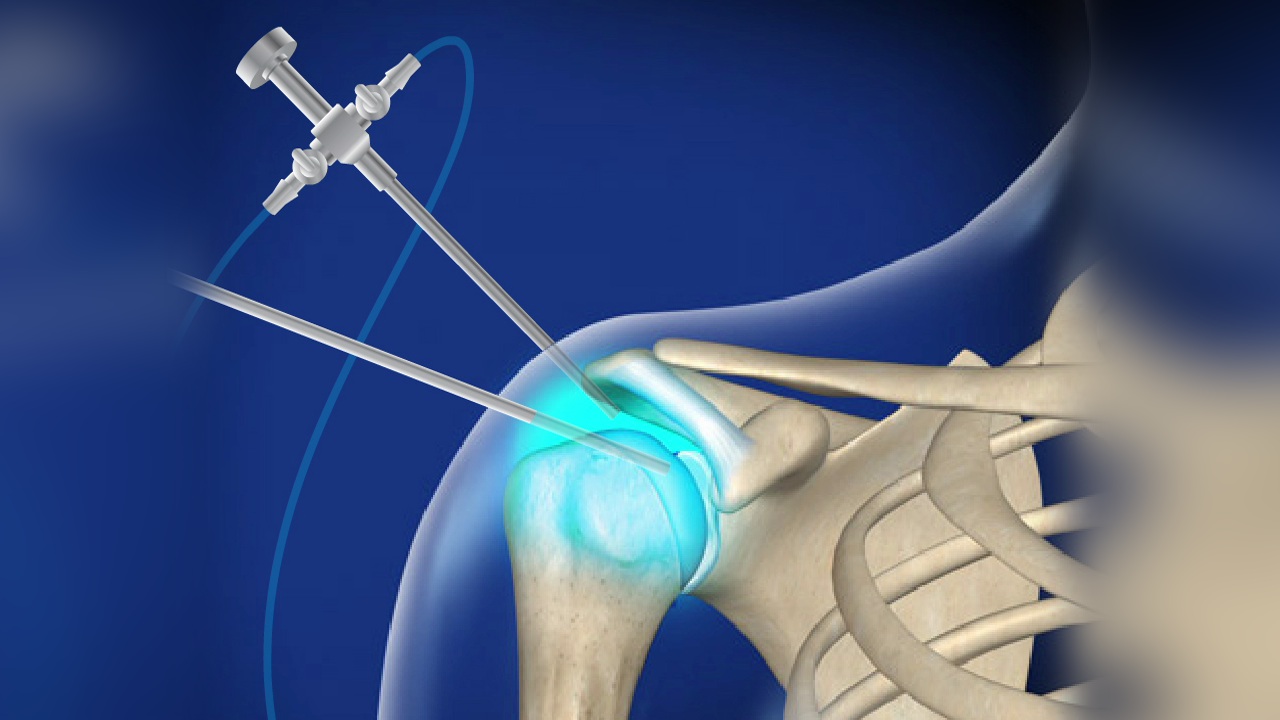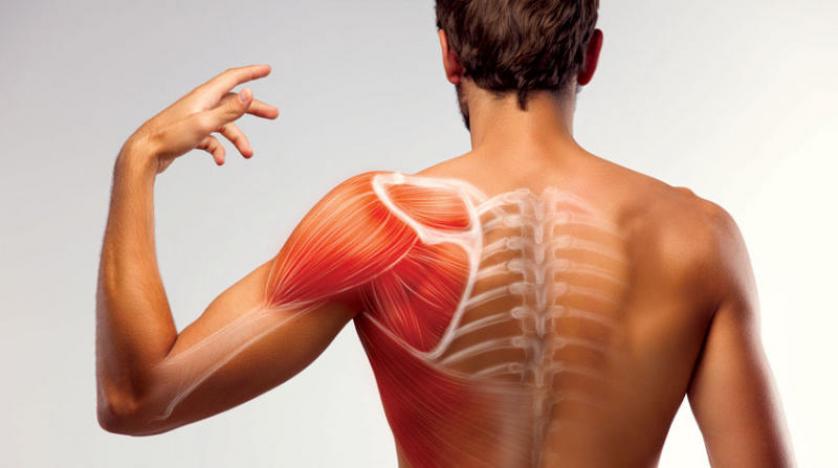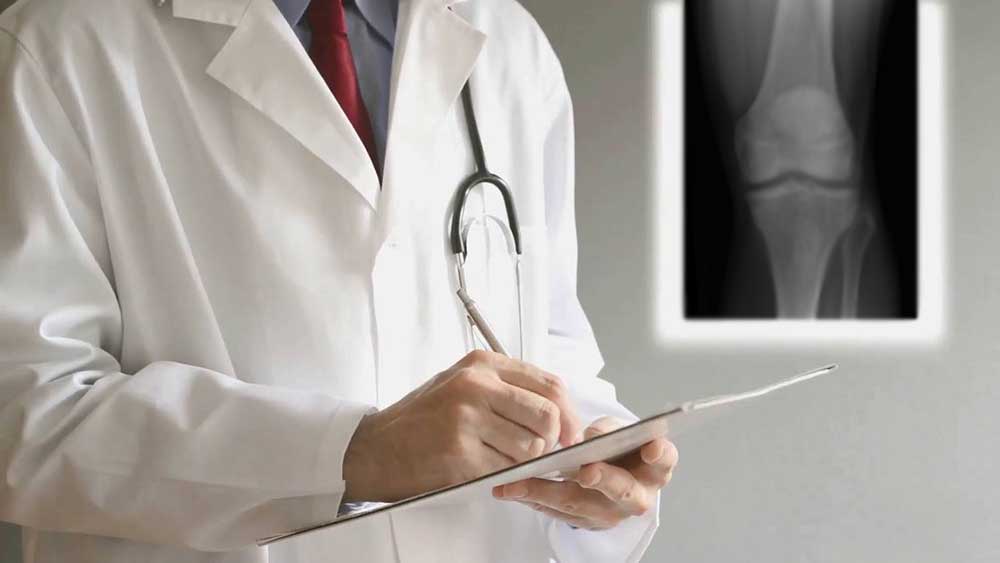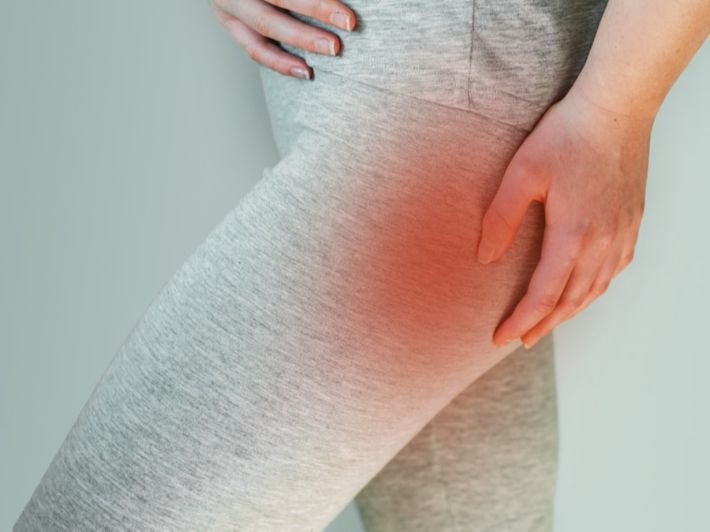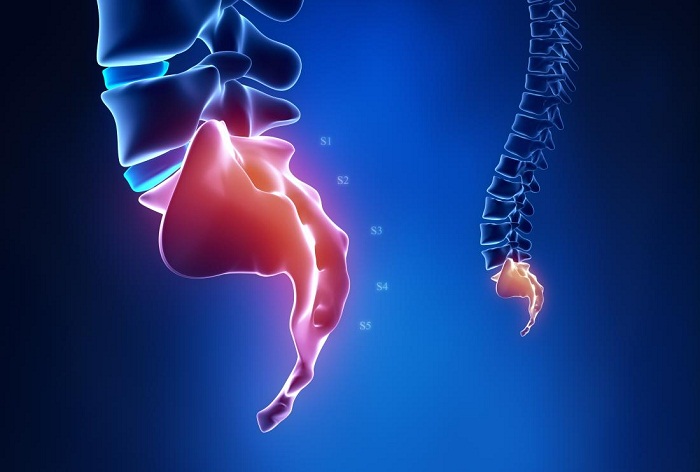Learn more about osteoporosis
Osteoporosis is a disease that inevitably affects individuals when they get older, but this does not mean that it may affect individuals at any stage of their life, follow the following article with us to learn about all aspects of osteoporosis and how to treat and adapt to it, let’s read the following.
Osteoporosis
Osteoporosis is a disease that affects the bones and causes a decrease in their density, which greatly weakens them in what is also known as osteoporosis, and fragility can affect the individual at any stage of his life, but despite this, the elderly are more susceptible to infection, and the incidence of women is significantly greater than that of men.
Osteoporosis is represented in the fact that it causes the expansion of the spaces that exist between the bones in the individual’s body, in addition, the bone structure becomes more vulnerable like a sheet, which makes it exposed to fractures with the slightest collision or light movement while carrying out their normal daily activities, and the most vulnerable areas for osteoporosis or exposure to fracture are the ribs, hip, wrist, and spine.
The decrease in bone density may be something that does not cause danger or concern in any way and may not be evidence of osteoporosis, but this does not mean that it has a major role in its infection and for this, it must be measured through examinations from time to time, and the doctor measures bone density to early detect osteoporosis through some methods, for example:
- Bone density examination (Dual energy X-ray absorptiometry – DEXA): This procedure is easy and fast, and at the same time it provides results with high accuracy, as the bone absorption technique is measured through X-rays, and this examination is performed on specific areas, such as the spine, pelvic bone, and palm joint, as they are more susceptible to osteoporosis, in addition to following up on the development that occurs in those areas over time.
- Ultrasound imaging.
- Computed tomography.
Can osteoporosis be cured?
Osteoporosis cannot be completely cured at all, but the severity of the damage to the individual can be mitigated by changing the improper life habits that he was doing and taking some medications that reduce bone fracture in the body or accelerate the compensation of damaged ones to be commensurate with the fracture process, meaning that complete recovery from osteoporosis is not important, but rather the fracture process that occurs in the individual’s body must be limited.
When does osteoporosis begin?
There are many misconceptions about osteoporosis affecting only the elderly, and this is not true at all. This is not true at all, as an individual may suffer from osteoporosis at any stage of his life, and bone density begins to decrease from the age of 30 to 40, and then bone density continues to decrease with age.
Symptoms of osteoporosis
Osteoporosis is called a silent disease because its symptoms do not begin to appear until very late when the condition begins to develop, but when some symptoms begin to appear, they are as follows:
- Constant severe pain in the neck, back, and spine.
- The appearance of a hump causes the curvature of the backbones, which causes poor breathing ability as a result of airway narrowing.
- The hand grip has greatly weakened the inability to press it, and the feeling of pain when trying to do so.
- Very weak nails and are easy to break.
How do we live with osteoporosis?
- Resorting to the use of some pain relievers that do not require a doctor’s consultation in case of severe pain, but while avoiding excessive use.
- Do hot water compresses or relax in a warm water bath because of the effective effect of heat in reducing pain.
- Performing electrical nerve stimulation through the skin.
- Massage the area where the pain is felt from time to time.
- Do some exercises that help to relax, but very carefully.
- Putting ice packs on the areas where the pain is felt.
Osteoporosis treatment
In the beginning, the treatment of osteoporosis depends on reducing bone fractures during the next ten years by following up on bone density from time to time, and if there is no risk in this matter, then, in that case, the focus is on strengthening the bones and preventing collision to avoid exposure to any fractures, and we will discuss some information regarding the medications that are used in osteoporosis in the following lines.
Bisphosphonates
It is considered one of the most well-known osteoporosis medications, as it is the first choice that the doctor prescribes to the patient, whether male or female and examples of these are:
- Alendronate (Binosto and Fosamax).
- Ibandronate (Boniva).
- risedronate (Actonel and Atelvia).
- Zoledronic acid (Reclast, Zometa).
Many side effects result from taking bisphosphonate medicines, which are the feeling of stomach pain, nausea, and a feeling like heartburn, but if the medicine is taken in the right and appropriate way, the severity of these symptoms will be less, in addition to taking it by intravenous injection, it does not cause stomach pain, but it may result in high fever, headache, and some muscle pain.
A crack or fracture in the middle of the thigh bone is also a very rare complication as a result of taking bisphosphonate drugs, and there may also be a delay in the healing of the jaw bones when an operation is performed to perform a tooth extraction.
Denosumab
When denosumab is compared with bisphosphonates, its results are better and more effective in terms of affecting bone density, in addition to protecting the body from exposure to any type of fractures, and it is taken by an injection under the skin once every six months.
Hormonal therapy
This treatment is useful for women immediately after menopause to compensate for the lack of estrogen to bone density, but the fear of it lies in the fact that it increases the risk of breast cancer and stroke, so it is preferable to use it with women whose age is young or whose menstrual cycle is interrupted and requires taking specific medications afterward.
Raloxifene (Evista) has a similar effect to estrogen to maintain bone density, but without exposure to the risk of breast cancer, on the contrary, it reduces some types, but it also has side effects such as high temperatures, in addition to increasing the possibility of stroke.
As for men, aging is also accompanied by a severe shortage of testosterone, and this is treated by taking medications that replace that hormone in their bodies or perform the same function, but in most cases, osteoporosis drugs are effective in men’s bodies and there is no need to take Hormonal drugs except in a few cases.
Bone-building drugs
If the individual’s osteoporosis has developed seriously and the previous medications no longer produce any results, in that case, the doctor prescribes the following medications:
- Teriparatide (Bonsity and Forteo): This is a very powerful drug that is similar in effect to parathyroid hormone, its function is to stimulate bone growth and it is taken daily by injection for up to two years.
- Abaloparatide (Tymlos): This drug is also similar in effect to parathyroid hormone and is only allowed to be taken for two years.
- Romosuzumab (Evenity): It is one of the latest drugs that have been devised for building bones and treating osteoporosis. It is taken by injection by the specialist doctor once a month, and the duration of taking this treatment lasts until one month only.
How do I get rid of osteoporosis permanently?
It is not possible to get rid of osteoporosis in a final way, but the focus is on limiting the development of its symptoms in the long term and reducing the bone fracture, and it is considered keenness to follow healthy habits and an appropriate lifestyle that has a major role in this matter, and for example:
- Regular exercise to maintain a strong physical structure and inflexible bones.
- Take care to lose excess weight and eat healthy foods to avoid increasing pressure on the bones so as not to develop humpback.
- Get enough sleep and rest, as this plays a major role in healthy bone growth.
- Using some herbal remedies to reduce pain when feeling it.
- Do some cold and hot compresses alternately, because of their great role in relaxing muscles and reducing pain.
What foods are good for osteoporosis?
Foods that are beneficial for osteoporosis should be rich in calcium, which maintains bone health greatly and helps in regeneration, in addition to vitamin D, as it helps in the process of absorbing calcium effectively. Examples of these foods are:
- Low-fat dairy products.
- Leafy vegetables such as broccoli, cabbage, and kale.
- seafood.
- soy products.
- Nuts.
Is walking useful in osteoporosis?
The treatment of osteoporosis is not limited to taking some medications or eating healthy foods, but also exercising and maintaining a healthy lifestyle is very important for the treatment to produce the required results, and here walking is very important and is recommended by many doctors, as the duration of walking should not be less than an hour per day.
What is the natural treatment for osteoporosis?
Herbal treatment has not lost its splendor since ancient times, despite the technological developments in the current era, and for this reason, doctors are advised to resort to it also in addition to other medicines and therapeutic methods, and examples of herbs used in that are:
- Red clover: Red clover contains very much estrogen-like compounds that have a great role in protecting bones.
- Black cohosh: works to maintain bone density appropriately in the individual’s body because it contains phytoestrogens.
- Horsetail: It is one of the best herbal methods used in the treatment of osteoporosis, as it contains silica, which works to rebuild bones and maintain their density.
- (Soy): All soy derivatives and products such as soy milk or tofu can be eaten in order to treat osteoporosis because it contains isoflavones, which are very similar to estrogen and maintain bone density at a normal rate.
Treatment of osteoporosis in young people
When a young person suffers from osteoporosis, the focus, in that case, is on taking a treatment that reduces bone fracture or increases its ability to regenerate to match what is broken in the body, and the matter is not limited to treatment only, but the individual must follow a healthy lifestyle and persevere in performing exercises sports to strengthen his bones and help them grow properly.
Treating osteoporosis with food
The realization of the osteoporosis patient that drug treatment alone will not be sufficient is very important, as he must also change his habits and lifestyle to be able to maintain the formation of a healthy physical structure, and for this, he must focus on some important elements for bone health and the foods that contain them, and for example,
Calcium
Calcium is an indispensable mineral in any way to maintain the formation of bone tissue in a good and effective way, as people between the ages of 15 to 50 years need 1000 milligrams daily, and with age and the increase in the weakness of the physical structure of the individual, the dose increases to 1200 milligrams per day, and examples of foods that are rich in calcium include:
- Low-fat dairy products such as cheese, milk, and yogurt.
- Leafy vegetables such as broccoli, cabbage, okra, kale, and mustard greens.
- Seafood such as canned salmon with bones and sardines.
- Soy products such as soybeans and tofu.
- Nuts like walnuts.
- Legumes such as lentils.
- Processed foods that have calcium added, such as orange juice, breakfast cereals, and soy drinks.
- Dried fruits such as raisins, figs, prunes, and apricots.
In the event of a severe deficiency in calcium, the individual may need to take nutritional supplements to compensate for the calcium deficiency, but a doctor is consulted first to make sure that the body needs it.
Vitamin D
Vitamin D helps the body effectively absorb calcium, and in order for it to be able to perform its function to the fullest, care must be taken to provide it in the body at an adequate rate, meaning that the individual needs 600-800 international units during one day and vitamin D can be obtained in several ways, such as exposure to sunlight daily, in addition to the use of some foods that are rich in it, for example:
- Fish that contain oils such as salmon, sardines, mackerel, and tuna.
- yolk.
- Processed foods that have vitamin D added to them, such as milk, breakfast cereals, rice milk, and soy milk.
Protein
Protein works to maintain the integrity of body tissues, and its decrease in the body has a major factor in fractures in the hip area in particular, and protein can be obtained through many foods such as meat, seafood, poultry, and dairy products.
Food not suitable for patients with osteoporosis
Some foods are important to be present in an individual’s food, but there are some things that must be avoided or reduced as much as possible, for example:
- Salty foods: They cause a significant increase in the level of sodium in the body of the individual, which increases the body’s need for greater amounts of calcium, and that is why you should avoid eating foods that contain high levels of sodium.
- Some whole grains: Some types of whole grains contain a high percentage of phytic acid, which in turn affects the body’s ability to absorb calcium in an effective way, such as beans, unleavened bread, raw beans, and wheat bran, and its effects can be reduced by By soaking it in water for two hours before preparing it for eating.
- Spinach: it contains oxalic acid, which hinders the body from absorbing calcium effectively.
- Vitamin A: Although it is very important for bone health, an excessive amount in the body, whether through nutritional supplements or foods that are rich in it, has great harm to bone health.
- Caffeine: Excessive drinking of caffeine plays a major role in reducing the body’s ability to absorb calcium, which reduces bone density. For example, coffee, tea, soft drinks, and energy drinks should be reduced.
Can osteoporosis be cured?
Osteoporosis cannot be completely cured, but treatment is taken to reduce the dangerous developments of this disease, in addition to relying not only on medication but rather on changing the lifestyle to be healthy and commensurate with the disease, as care must be taken to eat foods that are rich in elements that reduce a bone fracture or increase its ability to compensate for damaged bones.
The bone doses that the patient takes vary according to the extent of the development of his condition and his age, you may find yourself getting a dose every week or month only, while you see one of the other people with osteoporosis taking annual doses of treatment, and whoever determines these doses is the specialist doctor, and the timing of the medicines should not be disturbed, because their side effects may be dangerous in some cases.
Causes of osteoporosis
- Continuing to take certain medications that contain cortisone for long periods.
- Anticoagulants and some epilepsy drugs.
- Problems with glands or hormone production, such as hyperthyroidism, parathyroidism, Cushing’s syndrome, and estrogen deficiency.
- In women, the cause of osteoporosis is the interruption of their menstrual cycle at a certain stage of life or before the completion of the 45th year.
- Smoking of all kinds.
- Family history of the disease.
- Gonadotropin deficiency.
- Having a deficiency of calcium and vitamin D.
- Lack of exercise and inactivity for long periods.
How to prevent osteoporosis
- Ensure to eat healthy foods that contain appropriate proportions of proteins, calories, and important vitamins.
- At menopause in women, care must be taken to obtain calcium in a larger amount than usual, whether through food or nutritional supplements.
- Introducing vitamin D in foods or through nutritional supplements, as it increases the body’s ability to absorb calcium.
- Stop smoking, and drinking alcohol and soft drinks.
- Maintaining exercise.
- Take care not to be subjected to any strong collision or fall that may cause fractures.
What drinks cause osteoporosis?
Some types of drinks are very harmful because they may affect the individual with osteoporosis, and some of them may be shocking to many, as milk, for example, despite its many benefits, excessive consumption of it harms the bones very much, and this is because it contains acidic substances that must be balanced with some vegetables, as they contain fibers that work to retain calcium in the body.
Ignoring this balance causes many problems for the individual, which affects the health of the bones and reduces their strength. Coffee is also one of the drinks that reduce the body’s ability to absorb calcium, magnesium, and many other minerals, and excessive drinking of coffee dehydrates the body, which is why you should drink a cup of water after every cup of coffee.
In addition, soft drinks are also one of the things that negatively affect bone health, because they contain phosphoric acid, which affects the digestive system and teeth, in addition to its effect on kidney function. Soft drinks also cause osteoporosis.
Does vitamin D deficiency lead to osteoporosis?
The availability of vitamin D in the human body in an appropriate amount helps in building solid bones because it helps to increase the body’s ability to absorb calcium, which is very healthy for the integrity of the bones, and for this reason, vitamin D deficiency causes the bones to be greatly weakened and thinned, and with time the individual is vulnerable of osteoporosis.
Types of osteoporosis
There are many types of osteoporosis and they are classified according to the causes of injury and the method of treatment for each of them, including:
Primary osteoporosis
This type of osteoporosis affects the individual when there is no cause for it, but it is only as a result of advancing age and thus a decrease in bone density naturally, and it is divided into two parts:
- Idiopathic osteoporosis: It is most likely the most prevalent type of osteoporosis among individuals and affects women at a greater rate than men, and the chance of infection increases with age, as the older the individual becomes, the process of breaking down bone increases, and its replacement decreases, and thus bone density decreases over time, and it is divided into two types:
- Postmenopausal osteoporosis: This type affects women with age and menopause, which results in a decrease in estrogen hormone and thus a decrease in bone density, and this leads to osteoporosis and the resulting fractures in specific areas such as the forearm and vertebrae.
- Sensual osteoporosis: This type affects both sexes when they are over 70 years old as a result of a decrease in bone density with age, and fractures resulting from this type occur in the wrist, pelvis, and vertebrae.
- Juvenile osteoporosis: This type is more susceptible to children and adults, and it begins to appear from the age of 8 to 14, and it begins to appear from the year 8 to 14, and this is not related to any imbalance in hormones, and one of the symptoms of this type is the feeling of sudden pain in the bones or the occurrence of fractures as a result of a collision or fall.
Secondary osteoporosis
This type affects individuals as a result of having a certain disease or receiving some medications that have side effects on bone density, for example:
- Kidney failure.
- blood cancer.
- Thyroid diseases.
- Diseases of the parathyroid gland.
- Corticosteroids, if used in high doses for more than 6 months, such as Prednisone.
- Some medicines used to treat cancer, such as aromatase inhibitors and medroxyprogesterone.
Measurement of osteoporosis
It is very important for the elderly and women, immediately after the interruption of their menstrual cycle, to do this examination by monitoring bone density and knowing whether he is susceptible to osteoporosis or has already suffered from it, as this helps in early detection of osteoporosis and thus starting appropriate treatment in order to avoid complications of osteoporosis.
Does osteoporosis cause pain?
Mostly, osteoporosis does not cause any pain for people who suffer from it, and this is why it is known as a silent disease because its symptoms do not begin to appear until very late, and if the individual does not follow up on bone density from time to time, he does not discover that he has osteoporosis from the ground up until Late, and this is not accompanied by any pain except when the individual suffers fractures as a result.
Complications of osteoporosis
One of the serious complications of osteoporosis is exposure to fractures in the hip and spine areas, and the injury in the hip area most often occurs as a result of a fall or collision, and most likely it may cause an individual’s disability or death shortly after the injury as a result of the side effects of the operation, and this happens more often with the elderly.
As for the spine, only the spine is exposed to fractures without any collisions as a result of the extremely weak bone vertebrae, as the distances between the vertebrae bones begin to narrow with time, which causes severe pain in the back area, which causes humping, in addition to the individual suffering from breathing problems due to the narrow distance in which the air passes.


